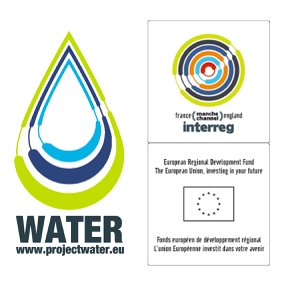
WATER – Wetted Land: Assessment, Technicques and Economics of Restoration
Project Overview
The WATER project aimed to protect rivers and biodiversity by restoring wetlands. In fact, the quality of water and its quantity in watercourses have deteriorated in the recent past following the degradation of wetlands that act as a natural filter for water from inland. . Poor water quality and insufficient water in watersheds have social, economic and environmental consequences for all areas of the Channel: increased droughts and floods; loss of biodiversity and disruption of ecosystem functioning; increasing the quantity of fresh water leading to the deterioration of aquatic ecosystems by the proliferation of certain plants; reduction in the capacity of watersheds to adapt to the effects of climate change. All these issues require integrated management of the water resource. Main actions: – Identification of the current distribution of wetlands and reconstruction of a map of their distribution in the past. – Restoration and management of old wetlands by working with landowners. – Assessment of the cost / benefit ratio of wetland restoration. – Dissemination and communication of information by the Channel area partnership.The WATER project aims to preserve rivers and biodiversity through the restoration of wetlands. Indeed, water quality and quantity of the rivers have weakened over the recent history of the deterioration of the wetlands, which buffer the water coming from the land. Poor water quality (and quantity) in the region: increased droughts and floods; reduced biodiversity and ecosystem function; increased freshwater and marine eutrophication; and reductions in the river catchment’s ability to cope with the effects of climate change. These issues require channel wide cooperation through integrated water resource management. Main actions: – Assessment of current wetland distribution and modeling of wetland distribution – Assessment and management of wetlands by working with landowners – Evaluation of the economics of wetland restoration – Dissemination and knowledge transfer by the cross-border partnership. Poor water quality (and quantity) in the region: increased droughts and floods; reduced biodiversity and ecosystem function; increased freshwater and marine eutrophication; and reductions in the river catchment’s ability to cope with the effects of climate change. These issues require channel wide cooperation through integrated water resource management. Main actions: – Assessment of current wetland distribution and modeling of wetland distribution –
Project Results
The bilingual book “History of European cooperation around wetted-lands” was created by ten partners in the United States of America, in Brittany and in Southern England. Marshes, ponds, lakes, rivers and estuaries play a significant role in preserving the quality of water and biodiversity, but also in preventing floods. The book has been prepared for the past two years, and written by French and English experts, coordinated by English partners in Brittany, proofread and translated by the English lead partner of WATER, and match-funded by ERDF. Over 1,000 copies of the book were printed and circulated to French and English at local, regional and national levels. This crossborder is full of pictures and testimonies. Not to be missed! Main achievements / results: – Identification of the current distribution of wetlands: 9 mapping of wetlands and uses. 1 GIS tool created. 4 surveys completed. – Restoration and management of old wetlands: 60 visits to farms. 2 methodological guides for the use of the owners. 300 ha of reconstituted swamps. 21 restoration projects completed. 8 agricultural workshops providing advice and practices. 2720 meters of fence installed to improve the swamps. – Evaluation of economic aspects: 1 published economic guide. 3 meetings between public and private funders. 1 technical workshop to include economic conditions. – Dissemination and communication of information: 1 educational path set up. 2 new Rivers Trusts in South East England. 34 educational wetlands visits. Main achievements: – Assessment of current wetland distribution: 9 inventories mapping wetted land uses Creation of 1 GIS tool Realization of 4 surveys – Restoration and management of wetlands training: 60 E-mail this page to a friend E-mail this page to a friend E-mail this page to a friend and private financiers 1 technical workshop to include economic requirements – Dissemination and knowledge transfer:

